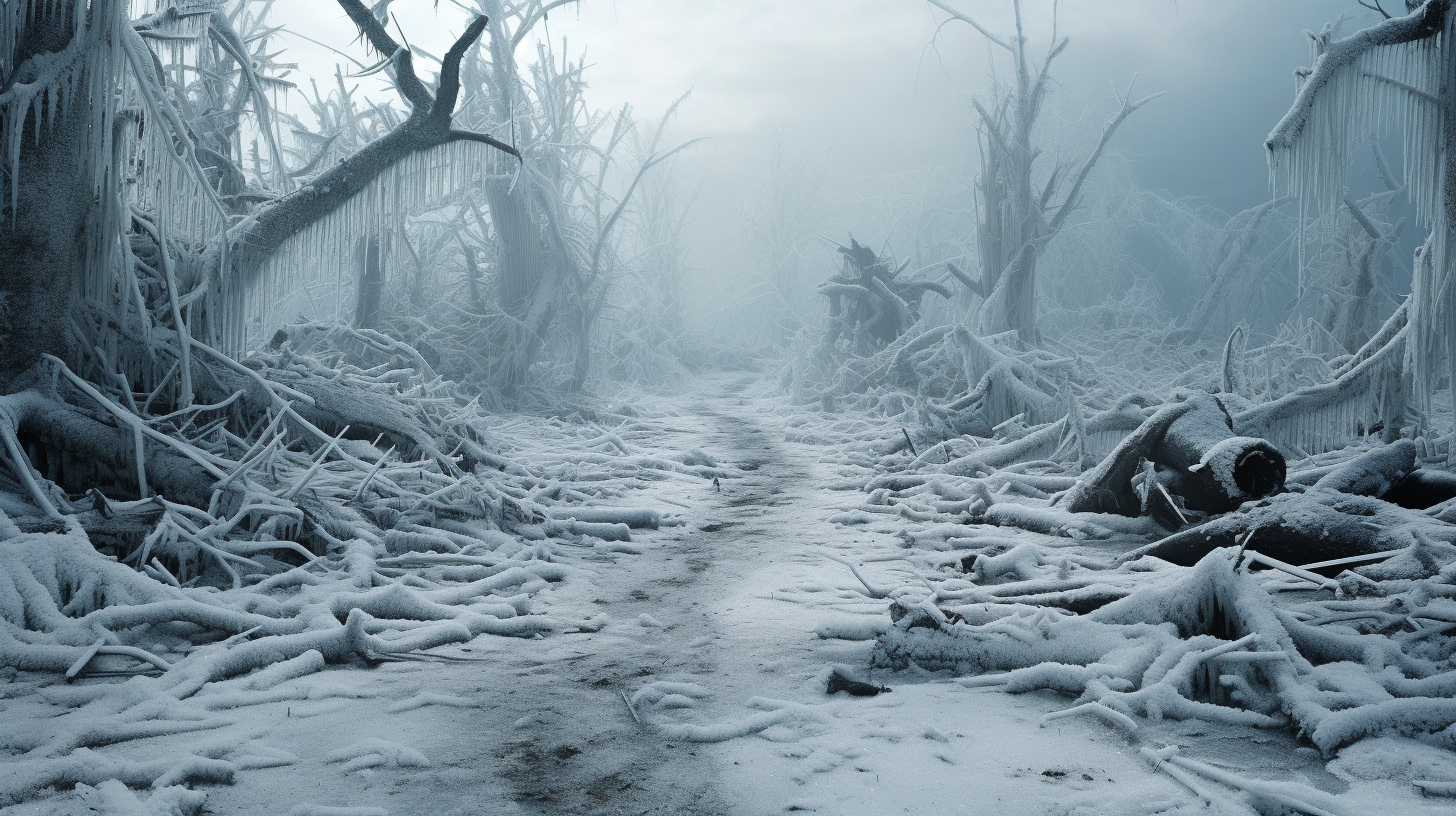Imagine a world where the crunch underfoot of fresh snow is a sound that has faded into the whispers of yesteryear. Not so long ago, winter signified a season cloaked in white, where breaths would become visible sighs in the cold air. Today, the narrative has shifted dramatically. Winter’s embrace grows weaker; its white mantle has tarnished into a dull gray. ‘The Fall of Frost – Winters Without White’ explores this chilling reality, sculpted by the brutal hands of environmental neglect.
Our winter wonderlands have wilted, succumbing to the surging heat. Snowflakes, those delicate ice flowers of the sky, are on the verge of extinction in the landscapes where children once frolicked and stories of snowmen sprung to life. This stark transformation is not just a trivial loss of seasonal scenery but heralds profound consequences for our ecosystems, economies, and traditions.
The causality of this bleak scenario is a tapestry woven by human hands. Greenhouse gases belched relentlessly into the skies have ensnared the planet in a thermal blanket of our own making. The increase in temperature has rewritten the rules for winter as global warming ensures that the snow line – that critical altitude above which snow can fall and settle – retreats ever upwards, towards the peak of oblivion.
Winter sports, once the heartbeat of the chilly season, stumble and falter, struggling for survival. Resorts previously abuzz with the promise of powder now stand as silent monuments to the world that was. The story of the ski industry’s desperate attempts to manufacture a snowy facade is as hollow as the echo of laughter once resonating in these mountains. The collapse of this sector is not just a financial crisis but a cultural catastrophe, erasing the heritage of generations and leaving an indelible scar on the identity of regions that once celebrated the cold.
The environmental impact goes deeper than the soil left bare without its wintry cover. Without snow to reflect sunlight, dark earth and rock absorb heat, further warming the planet in a self-reinforcing cycle of despair. Forests, once shielded by a blanket of snow, now face the elements unprotected, leading to a cascade of biodiversity loss. Rivers and reservoirs, reliant on the gradual melt of springtime for their replenishment, find themselves parched as snowfall fails.
Imagine a generation of children for whom ‘white Christmas’ is a term as fantastical as the mythical creatures in their storybooks. We stand at the precipice of a paradigm where the stories we tell to describe the changing climes might be our only solace in a world hostile to the wintry fairy-tales of old. The cultural legacy of winter, embodied in literature, art, and song, is reduced to echoes of a bygone era, leaving us grasping for meaning in the artifices we create to mimic nature’s erstwhile bounty.
Global efforts to combat climate change have been met with a tapestry of successes and failures. However, the white winters we knew appear to be casualties lost to the inertia of environmental action, too far gone to be recovered by half-measures and future promises. The ramifications of these changes stretch beyond the observable landscape into the psychogeography of societies worldwide. The loss of winter strikes a blow to the collective consciousness, a thread unraveled from the fabric of our shared human experience.
In this desolate scene, we witness ecosystems fraying at the edges and traditions drifting into obscurity. As we herald the ‘Fall of Frost’, let this narrative of the winters without white serve not just as a eulogy to what we have lost, but an urgent clarion call for the preservation of what remains. The canvas of our future is stark, but the strokes by which we paint it are still, for now, within our control.
